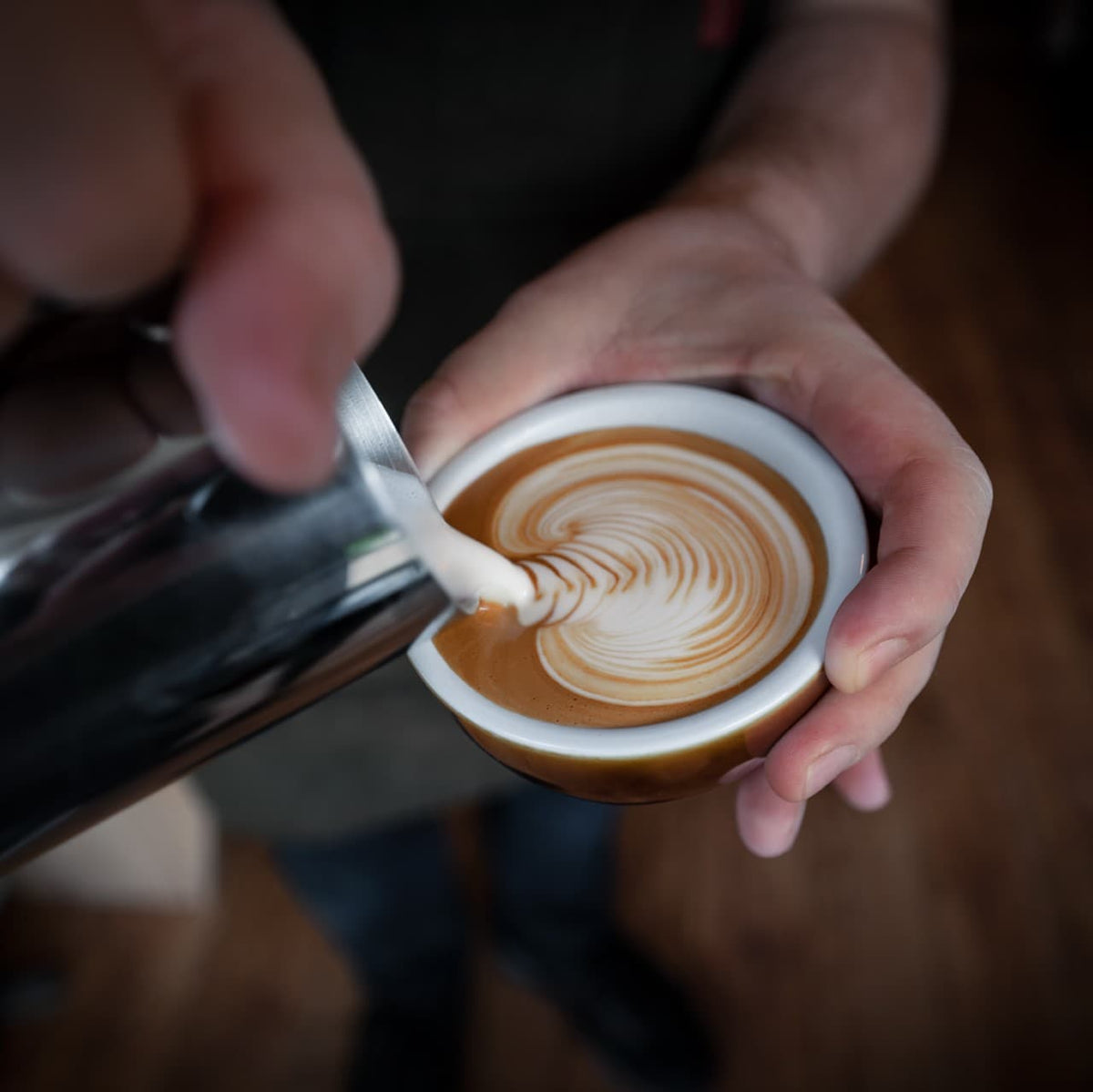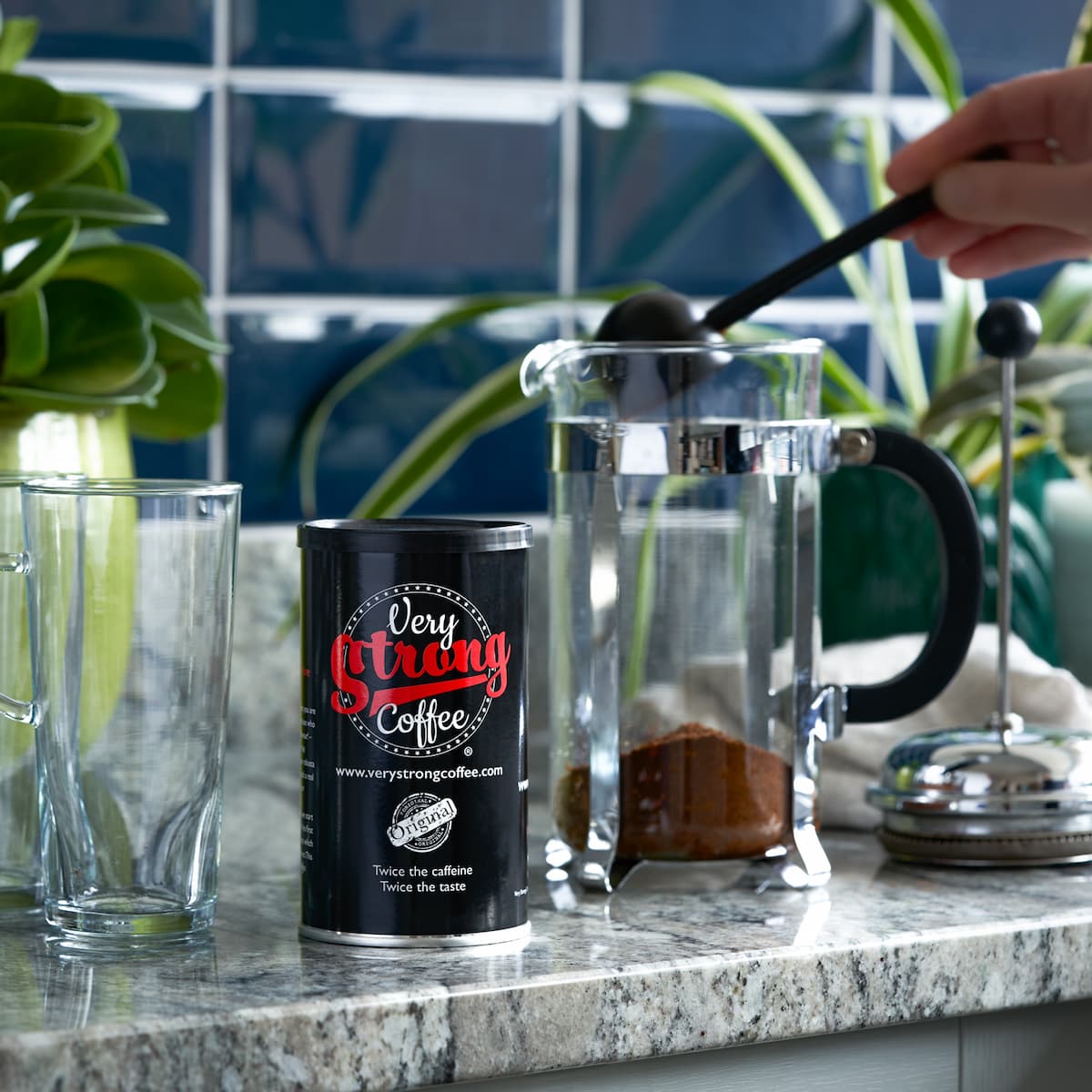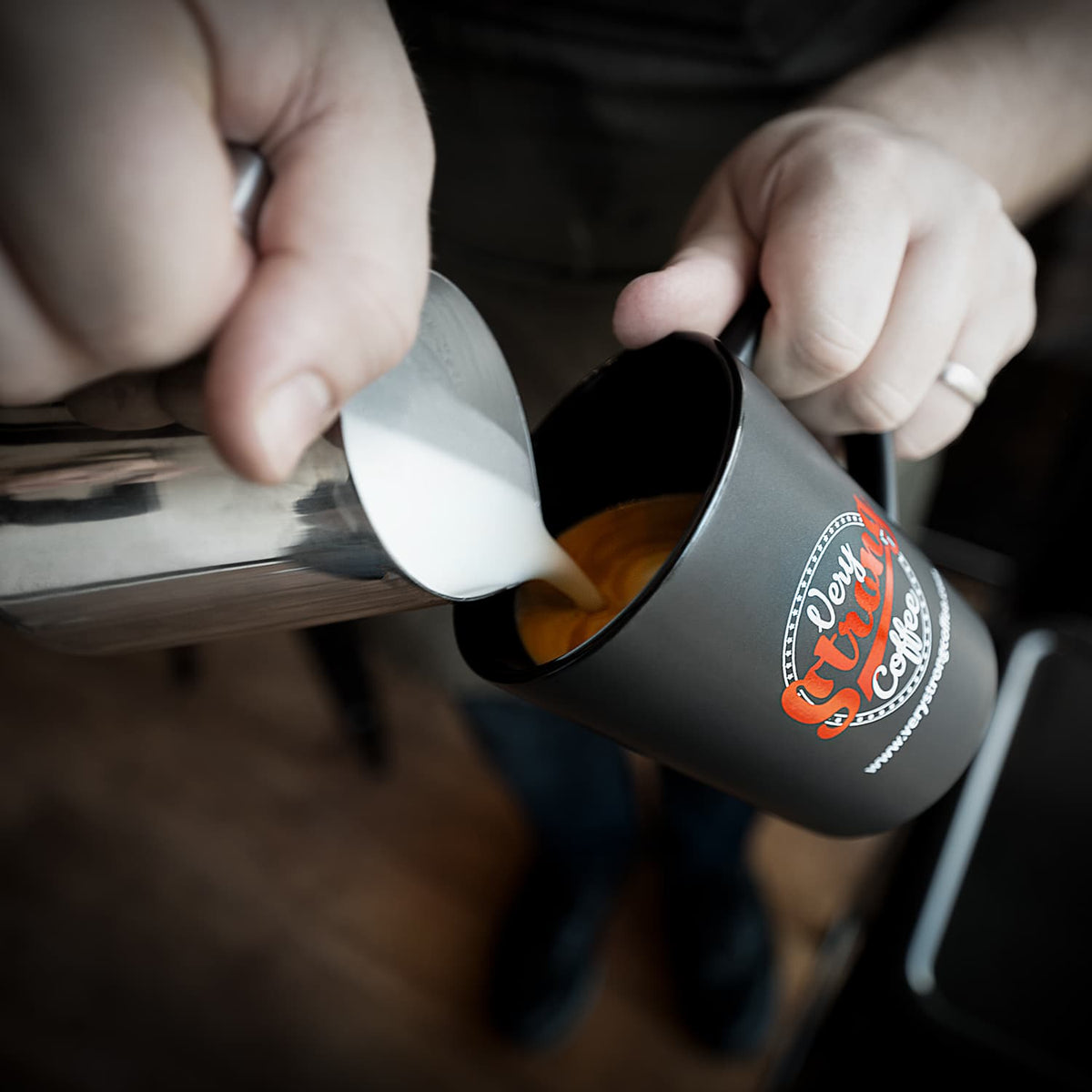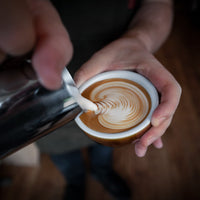What is a Flat White and How to Make One
June 8, 2023
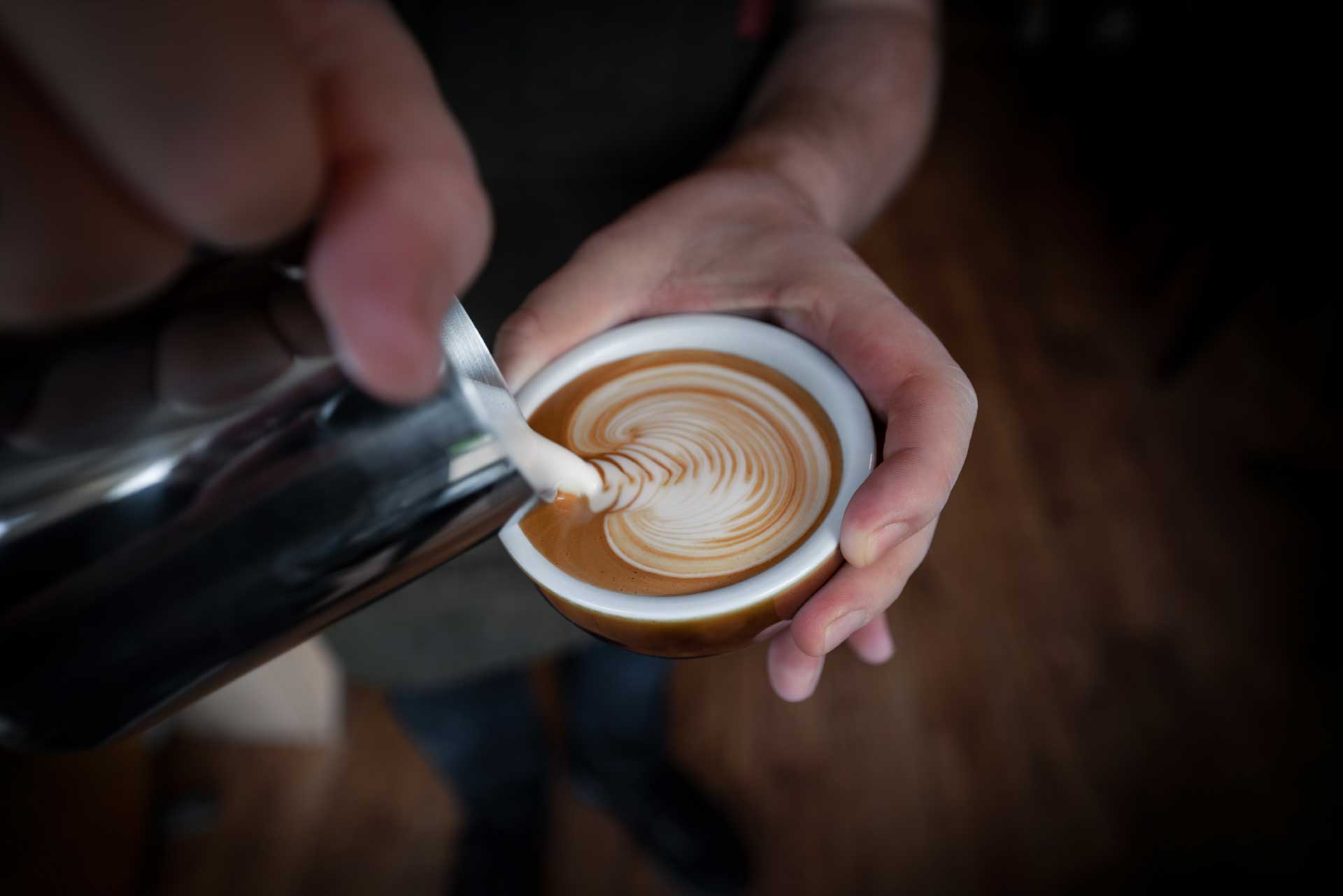
The Flat White Coffee
A flat white is a popular espresso-based coffee beverage that originated in Australia and New Zealand. It has gained widespread popularity in recent years and is now a staple on coffee shop menus around the world. In this comprehensive guide, we'll explore what makes a flat white unique and provide step-by-step instructions on how to make one at home.
Table of Contents
- Understanding the Flat White
- Ingredients and Equipment
- Step-by-Step Guide to Making a Flat White
- Tips for Perfecting Your Flat White
- Flat White Variations
Understanding the Flat White
A flat white is made by combining a double shot of espresso with microfoam, which is steamed milk with a velvety texture. The drink has a smooth, creamy consistency and a strong coffee flavor. It is similar to a latte and a cappuccino but has a few distinct differences:
- Espresso: A flat white typically uses a double shot of espresso, which gives it a more robust coffee flavor compared to a latte.
- Milk: The milk in a flat white is steamed to create microfoam, which has a smoother, creamier texture than the frothier milk used in a cappuccino.
- Size: A flat white is generally smaller than a latte, with a higher coffee-to-milk ratio, resulting in a more intense flavor.

Ingredients and Equipment
To make a flat white at home, you will need the following ingredients and equipment:
- Freshly roasted coffee beans
- A coffee grinder (preferably a burr grinder for consistent grind size)
- An espresso machine or alternative espresso maker (such as a Moka pot or AeroPress)
- A milk frothing pitcher
- A thermometer (optional, for precise milk temperature)
- Fresh, cold milk (whole milk is recommended for a creamier texture)
- A coffee scale (optional, for accurate measurements)

Step-by-Step Guide to Making a Flat White
- Grind your coffee beans: Grind your coffee beans to a fine consistency, suitable for espresso brewing. Aim for a texture similar to table salt.
- Prepare your espresso: Measure 18-20 grams of coffee grounds and use them to pull a double shot of espresso using your preferred method. For a flat white, the ideal extraction time is around 25-30 seconds.
- Steam the milk: Fill your milk frothing pitcher with cold milk, no more than half full. Steam the milk to create microfoam, aiming for a final temperature of 150°F to 155°F (65°C to 68°C). The milk should have a velvety texture with small, uniform bubbles.
- Pour the milk over the espresso: Gently pour the steamed milk into the espresso, keeping the pitcher close to the cup. Aim for a consistent, creamy texture throughout the drink. To create latte art, tilt the cup slightly and pour the milk in a steady stream, gradually lifting the pitcher as you pour.
- Serve and enjoy: Serve your flat white in a 5-6 ounce cup, and enjoy the rich, smooth flavor.
Tips for Perfecting Your Flat White
- Use freshly roasted coffee beans: Freshly roasted coffee beans provide the best flavor and aroma. Purchase your beans from a local roaster or an online store that provides roast dates, and grind them just before brewing. We recommend trying Very Strong Coffee for that full flavor and strength.
- Pay attention to milk temperature: The ideal milk temperature for a flat white is between 150°F and 155°F (65°C and 68°C). Overheating the milk can result in a less creamy texture and a scalded taste.
- Practice milk frothing technique: To achieve the velvety microfoam that characterizes a flat white, practice your milk frothing technique. Use a thermometer to monitor the milk temperature and focus on creating small, uniform bubbles.
- Experiment with coffee-to-milk ratios: The standard coffee-to-milk ratio for a flat white is 1:2, but you can experiment with different ratios to suit your taste preferences. Adjusting the ratio will affect the intensity of the coffee flavor and the overall drink size.
- Clean and maintain your equipment: Regularly clean and maintain your espresso machine, grinder, and other coffee equipment to ensure optimal flavor and performance. This will help you consistently produce high-quality espresso and steamed milk for your flat white.
Flat White Variations
There are several variations of the flat white that you can try at home or find at specialty coffee shops:
- Cortado: A cortado is similar to a flat white but uses equal parts espresso and steamed milk. It is typically served in a smaller 3-4 ounce cup.
- Long Macchiato: A long macchiato is made with a double shot of espresso and a small amount of steamed milk, resulting in a stronger coffee flavor than a flat white.
- Almond Milk Flat White: For a dairy-free alternative, you can use almond milk or other plant-based milk options. Keep in mind that the texture and taste may vary from traditional flat whites made with cow's milk.
Now that you have a comprehensive understanding of what a flat white is and how to make one, it's time to put your skills to the test. Experiment with different coffee beans, milk types, and brewing techniques to create the perfect flat white that suits your taste preferences. Enjoy!
Flat White FAQ's
1: What type of coffee beans should I use for a flat white?
You can use any type of coffee beans for a flat white, depending on your taste preferences. However, medium to dark roast beans are often preferred for espresso-based drinks like the flat white, as they provide a richer, more robust flavor that pairs well with milk. Get yours HERE
Can I use alternative milk options for a flat white?
Yes, you can use alternative milk options such as almond, soy, oat, or coconut milk for a flat white. Keep in mind that the texture and taste may vary from traditional flat whites made with cow's milk. Some plant-based milk alternatives may not froth as well, which can affect the texture of the microfoam.
Is a flat white the same as a latte?
A flat white and a latte are similar espresso-based drinks, but they have some differences. A flat white typically has a stronger coffee flavor due to the higher coffee-to-milk ratio and the use of a double shot of espresso. Additionally, the milk in a flat white has a smoother, creamier microfoam texture compared to the frothier milk in a latte.
Can I make a flat white without an espresso machine?
While an espresso machine is ideal for making a flat white, you can still create a similar drink using alternative espresso makers like a Moka pot or an AeroPress. These methods may not provide the same level of pressure and extraction as an espresso machine, but they can still produce a strong, concentrated coffee suitable for a flat white.
How do I create latte art on my flat white?
To create latte art on your flat white, practice your milk pouring technique. Begin by tilting the cup slightly and pouring the steamed milk slowly and steadily into the espresso. Keep the milk pitcher close to the surface of the coffee to create a smooth, even layer of milk. As you pour, gently move the pitcher in the desired pattern, gradually lifting it as you go. With practice, you'll be able to create simple designs like a heart or a rosetta.


